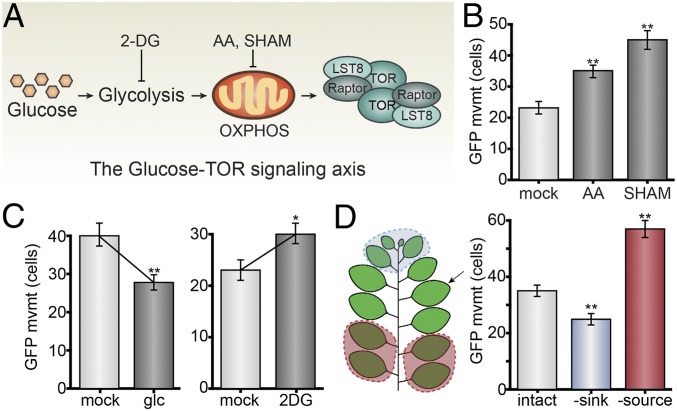Fig. 4.
Glucose-TOR signaling restricts PD transport in leaves. (A) Summary of the glucose-glycolysis-OXPHOS-TORC1 signaling axis (40) interrogated in this figure, with inhibitors of glycolysis and OXPHOS indicated. (B) Chemically inhibiting OXPHOS with antimycin A (AA) increases PD transport (n ≥ 135, P < 0.001; error bars indicate SEM), similar to the previously reported effect of salicylhydroxamic acid (SHAM) (8). L7 leaves were used for these experiments. (C) 15 mM d-glucose (glc) activates TOR and decreases PD transport in young leaves (n ≥ 95, **P < 0.001; error bars indicate SEM); 15 mM 2-DG inhibits glycolysis and increases PD transport. L7 leaves were used for these experiments. (D) GFP movement was assayed in the proximal 25% of a leaf (L7, indicated with an arrow) that has not yet fully expanded. PD transport increases after limiting sugar availability by source removal (L1 through L4 defoliated for 48 h, red), and PD transport decreases after increasing sugar availability by sink removal (L10 through L13 defoliated for 48 h, blue).

